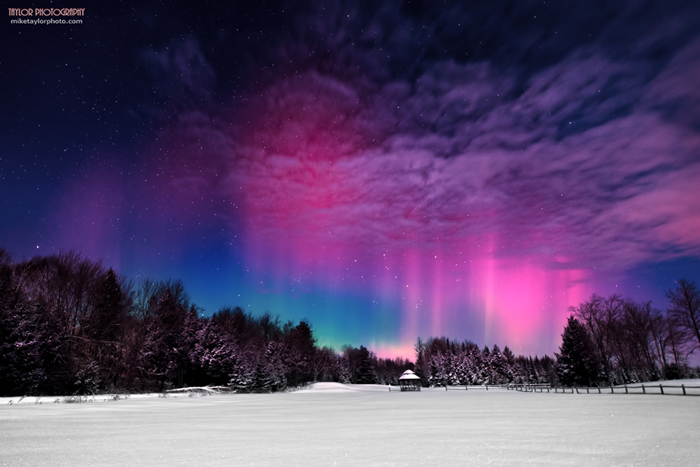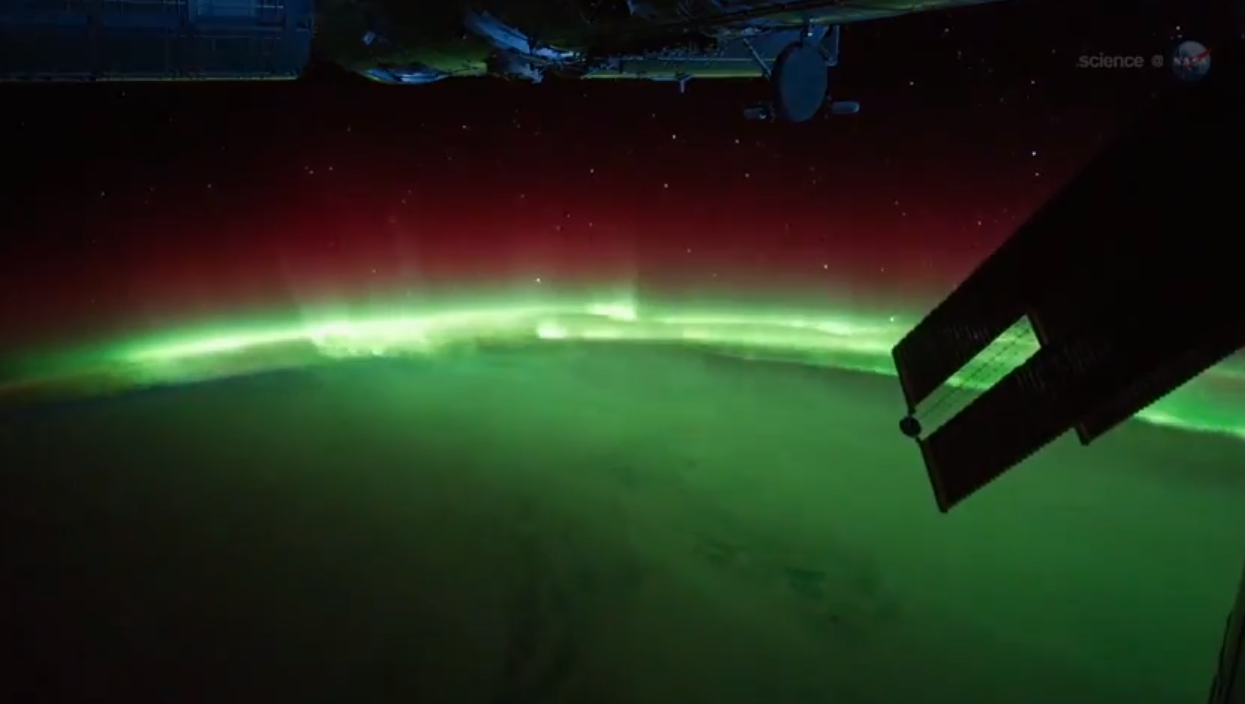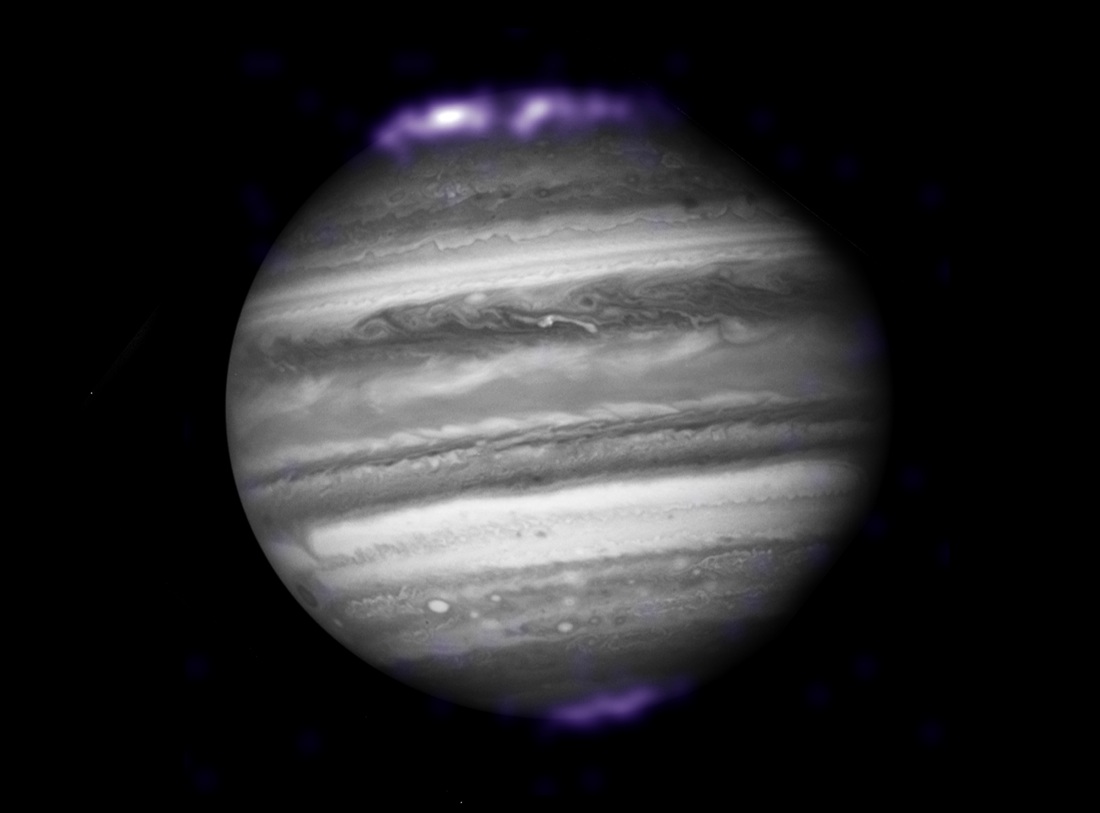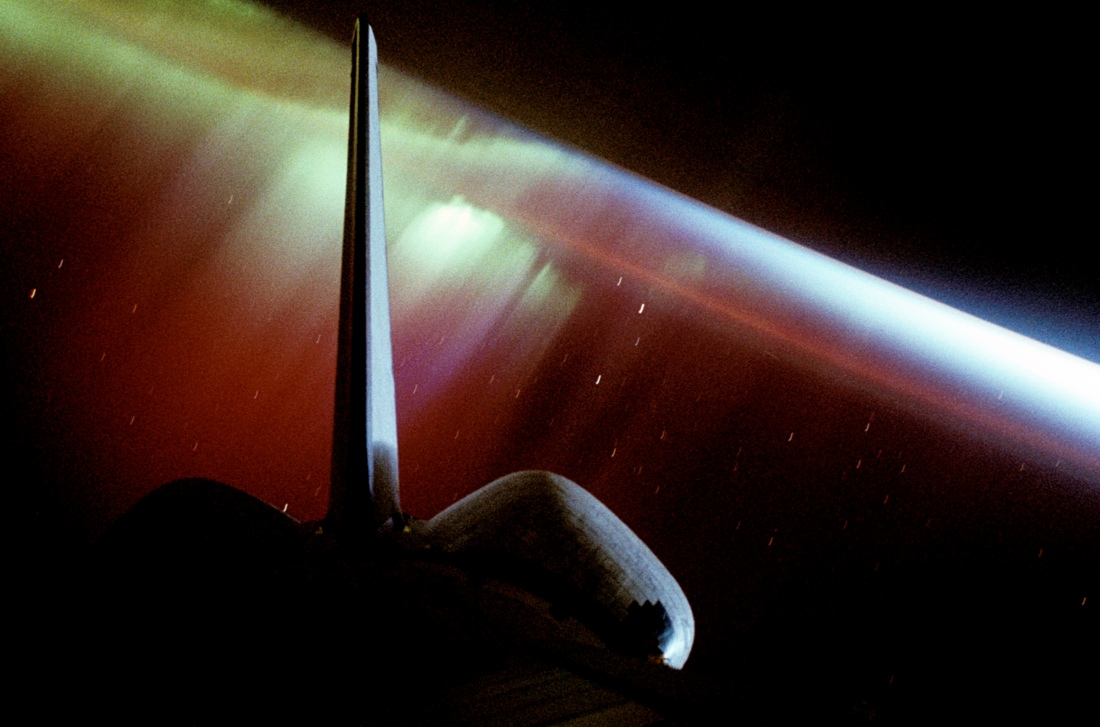Northern Lights: 8 Dazzling Facts About Auroras
The aurora borealis – otherwise known as the northern lights – is a vivid demonstration of the Earth's magnetic field interacting with charged particles from the sun. It's also beautiful, and worth braving a cold night out when visiting the high northern (or southern) latitudes.
Auroras are centered on the Earth's magnetic poles, visible in a roughly circular region around them. Since the magnetic and geographic poles aren't the same, sometimes the auroras are visible farther south than one might expect, while in other places it's farther north. [Aurora Photos: Northern Lights Dazzle in Night-Sky Images]
In the Northern Hemisphere, the auroral zone runs along the northern coast of Siberia, Scandinavia, Iceland, the southern tip of Greenland and northern Canada and Alaska. Auroras are visible south of the zone, but they are less likely to occur the farther away you go. The Southern Hemisphere auroral zone is mostly over Antarctica, or the Southern Ocean. To see the southern lights (or aurora australis), you have to go to Tasmania, and there are occasional sightings in southern Argentina or the Falklands – but those are rare. Here are some dazzling facts about these light shows.
1. Different ions make different colors

Aurora displays are created when protons and electrons stream out from the solar surface and slam into the Earth's magnetic field. Since the particles are charged they move in spirals along the magnetic field lines, the protons in one direction and the electrons in the other. Those particles in turn hit the atmosphere. Since they follow the magnetic field lines, most of them enter the atmospheric gases in a ring around the magnetic poles, where the magnetic field lines come together.
The air is made up largely of nitrogen and oxygen atoms, with oxygen becoming a bigger component at the altitudes auroras happen – starting about 60 miles up and going all the way up to 600 miles. When the charged particles hit them, they gain energy. Eventually they relax, giving up the energy and releasing photons of specific wavelengths. Oxygen atoms emit green and sometimes red light, while nitrogen is more orange or red.
2. They are visible from space
Sign up for the Live Science daily newsletter now
Get the world’s most fascinating discoveries delivered straight to your inbox.

Satellites can take pictures of the aurora from Earth's orbit — and the images they get are pretty striking. In fact, auroras are bright enough that they show up strongly on the nightside of the Earth even if one were looking at them from another planet.
The International Space Station's orbit is inclined enough that it even plows through the heavenly lights. Most of the time nobody notices, as the density of charged particles is so low. Rodney Viereck, director of the Space Weather Prediction Test Bed at the National Oceanic and Atmospheric Administration (NOAA),said the only time it matters is during particularly intense solar storms, when radiation levels are high. At that point all the astronauts have to do is move to a more protected area of the station. (Ironically, intense solar storms can actually reduce the amount of radiation around the space station, because of the interactions of charged particles with the Earth's magnetic field). Meanwhile, ISS astronauts can snap gorgeous auroral panoramas.
3. Other planets have them

Voyagers 1 and 2 were the first probes to bring back pictures of auroras on Jupiter and Saturn, and later Uranus and Neptune. Since then, the Hubble Space Telescope has taken pictures of them as well. Auroras on either Jupiter or Saturn are much larger and more powerful than on Earth, because those planets' magnetic fields are orders of magnitude more intense.
On Uranus, auroras get weirder, because the planet's magnetic field is oriented roughly vertically, but the planet rotates on its side. That means instead of the bright rings you see on other worlds, Uranus' auroras look more like single bright spots, at least when spied by the Hubble Space Telescope in 2011. But it's not clear that's always the case, because no spacecraft has seen the planet up-close since 1986.
4. The lights can move south
Occasionally the auroras are visible farther from the poles than usual. In times of high solar activity, the southern limit for seeing auroras can go as far south as Oklahoma and Atlanta — as it did in October 2011. A record was probably set at the Battle of Fredericksburg in Virginia in 1862, during the Civil War, when the northern lights appeared. Many soldiers noted it in their diaries. Viereck said it is actually harder now than a century ago to tell when auroras are very bright, because so many Americans live in cities, and the lights wash out the aurora. "You could have a major auroral storm in New York City and if you looked up you wouldn't notice," he said.
5. Divine signs?

Speaking of that Civil War aurora, a few observers took the swirling light show as a bad omen (notably Elizabeth Lyle Saxon, who wrote about the phenomenon in her 1905 book, "A Southern Woman's War Time Reminiscences"), though most people just saw it as an unusual and impressive display. In areas where the lights are rare, they were often taken as bad omens, as the ancient Greeks did. The Inuit, who see auroras more often, thought the lights were spirits playing in the sky, and some groups would tell children not to play outside at night lest the aurora disappear and take them along. Lapplanders thought the lights were the spirits of the dead. In the Southern Hemisphere, the Maori and Aboriginal people of Australia associated the southern lights with fires in the spirit world.
Oddly, the Old Norse and Icelandic literature doesn't seem to mention auroras much. The Vikings thought the displays might be fires that surrounded the edge of the world, an emanation of flame from the northern ice, or reflections from the sun as it went around the other side of the Earth. All three ideas were considered rational, non-supernatural explanations in the Medieval Period.
6. Cold fire
The northern lights look like fire, but they wouldn't feel like one. Even though the temperature of the upper atmosphere can reach thousands of degrees Fahrenheit, the heat is based on the average speed of the molecules. After all, that's what temperature is. But feeling heat is another matter – the density of the air is so low at 60 miles (96 kilometers) up that a thermometer would register temperatures far below zero where aurora displays occur.
7. Cameras see it better
Auroras are relatively dim, and the redder light is often at the limit of what human retinas can pick up. Cameras, though, are often more sensitive, and with a long-exposure setting and a clear dark sky you can pick up some spectacular shots.
8. You can't predict a show
One of the most difficult problems in solar physics is knowing the shape of a magnetic field in a coronal mass ejection (CME), which is basically a huge blob of charged particles ejected from the sun. Such CMEs have their own magnetic fields. The problem is, it is nigh impossible to tell in what direction the CME field is pointing until it hits. A hit creates either a spectacular magnetic storm and dazzling aurora with it, or a fizzle. Currently there's no way to know ahead of time.
NOAA has an online map that can tell you what auroral activity looks like on any given day, showing the extent of the "auroral oval" and where one is more likely to catch the lights.
Follow Live Science @livescience, Facebook & Google+.











